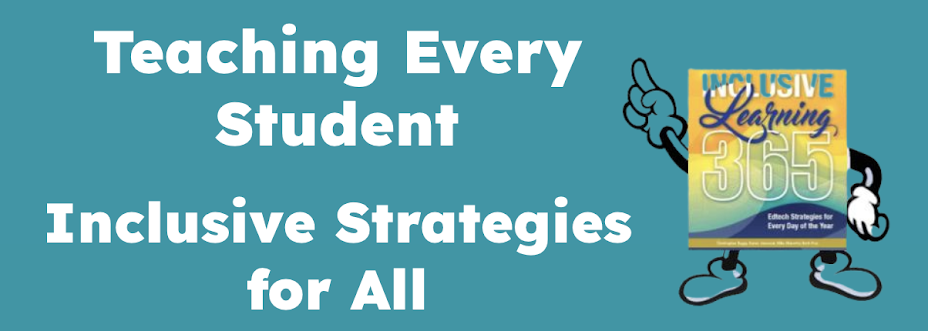I do hope you have.
And if you've wondered what to do next, then you must read Melinda Pongrey's article, "Dyslexia and High School,"
This article will help you gain some perspective on the challenges facing students with learning disabilities in your classroom. Melinda was allowed to observe what was happening in a high school Literature class as part of her work with a particular high school student. What she found was typical, yet disturbing, as it revealed the use of instructional methods that prevented her student's success.
Fortunately, she included numerous alternatives for the following commonplace classroom activities:
First task: Copy the definition of a vocabulary word from the overheadNeed alternative ideas? Look at these wonderful options to the fifth task, "Listen and write four dictated questions on a piece of notebook paper":
Second task: Note the date of the upcoming vocabulary
Third task: Read a paragraph aloud from the overhead
Fourth task: Read To Kill A Mockingbird silently for 15 minutes
Fifth task: Listen and write four dictated questions on a piece of notebook paper
Sixth task: Listen to class discussion, then hand write the answers to the dictated questions
And you may find what helps your students with LDs and/or IEPs, benefits all your kids.Because listening and writing are not accurate and automatic for many students who have dyslexia, the seemingly "simple" task of copying dictated questions is NOT EASY. Processing difficulties could be bypassed by using the traditional format of handing out a paper with the questions printed on it.
Or, more interestingly, the teacher could post the questions on a classroom blog or website for students to access in the class or in the library or the cafe or when at home. Even more engaging, would be to text message the questions to the student's cell phones. Students could text-message the answers back to the teachers e-mail using the free software Jott? Cool? Even cooler is the word prediction support on cell phones, which aids spelling and writing.

2 comments:
Thanks for the link to this article. I thought it was great because it gave practical alternatives. I would also think Voicethread would be a great alternative for some of this also.
I read Ms. Pongrey's article. I liked how she identified and outlined the challenged that a student with a reading disability faces within a regular educational setting. Some of her interventions suggested the use of sending messages to sutdents via cellphones and emails. Our school has boundary policies, where staff is not permitted to interact with students using cell phones/email. Any type of correspondence using that type of medium have to be directly used with the student's parent/guardian. I think I would have benefitted from more in-class interventions that could be implemented throughout the school day within the actual class. For some of my students who have difficulty copying definitions for vocabulary, I utilize handouts/ PowerPoint presentations which embed pictures/symbols to assit with increasing the comprehension and use of the vocabulary word. This visual allows the student to describe what he/she sees in order to infer meaning. Using the picture description task, the student then is asked to make associations by compiling a lis of one-two word synonyms to assit with recalling the meaning of the word, in order to decrease writing demands. My students that have reading difficulties, usually have a better receptive language skills than expressive and compensate their writing/reading deficits by recalling information/details. I also utilize video clips to support learning within the class setting, where the student is asked questions throughout the video to assess their knowledge about the content area. My students do not have constant access to computers/cell phones throughout the day.
Post a Comment